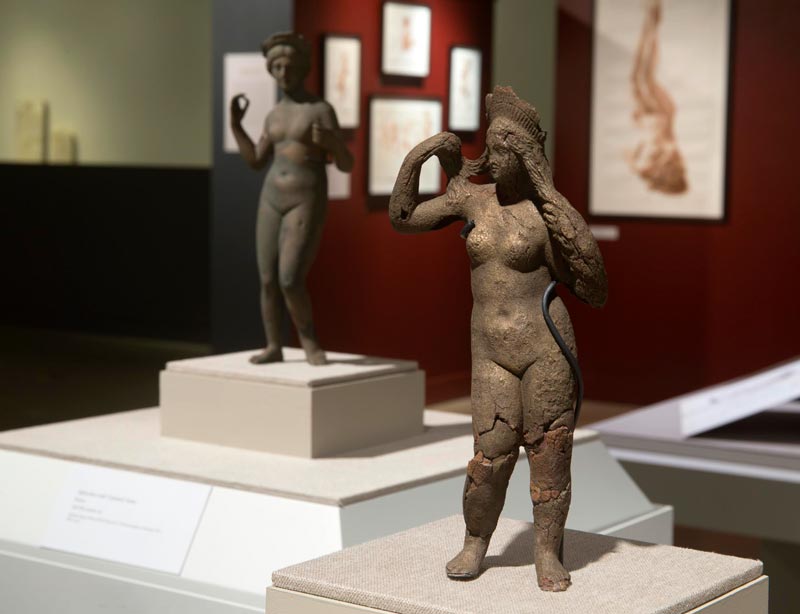Aphrodite
CR: Let’s talk about Aphrodite. The figure type represented by the statuette from Rhodes that you used to illustrate one of Heaney’s poems is known as the Aphrodite Anadyomene—Aphrodite Rising from the Sea. The conventional interpretation of her gesture is that, having just emerged from the sea from which she was born, she is wringing the water out of her hair. You pointed out to me that this is not the way most people would do that (they would gather their hair into a single skein and use both hands to wring it out, like a towel). What do you think she is doing?
WA: There are other images of Aphrodite Anadyomene where she appears more convincingly to be wringing out her hair. Here, unless she is planning to sit with her arms up in an uncomfortable position until her hair air-dries, it looks unlikely that that is what she is doing. For a painter, she is gracefully occupying a nicely rectangular shape of space, which eliminates the typical repetitive triangle made by the head and shoulders. But being a classical statue, it is unlikely that the sculptor simply asked her to stay in that fairly odd pose… To me, she looks like she is somewhat demurely displaying or making an offering of her hair.

